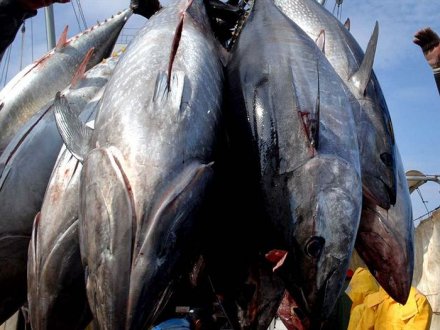President Anote Tong of Kiribati pledged today that he would ban all commercial fishing at the end of the year in the Phoenix Islands Protected Area (PIPA), a California-sized swath of Central Pacific waters that are among the world’s most biologically rich and intensely fished.
The reserve, Tong said today at the televised opening of the Our Ocean conference at the State Department in Washington, D.C., is “a major spawning ground for tuna, so its closure will have a major contribution to the conservation and rejuvenation of fish stocks and to global food security.”
Tong made his announcement this morning at the State Department’s two-day “Our Ocean” conference, where political leaders, ocean scientists and industry officials are gathering in Washington to address various threats to ocean health including overfishing, climate change and pollution.
“Action is our obligation for our children and our children’s children,” Tong said. “The closure of the Phoenix Island Protected Area will have a major contribution for regeneration of tuna stocks, not only for us but for our global community, and for generations to come.”
Secretary of State John Kerry introduced President Tong and acknowledged that while there are many international crises to attend to, it was important to focus on the health of the world’s oceans because the “survival of the planet is at stake.”
Agencies/Canadajournal
 Canada Journal – News of the World Articles and videos to bring you the biggest Canadian news stories from across the country every day
Canada Journal – News of the World Articles and videos to bring you the biggest Canadian news stories from across the country every day



